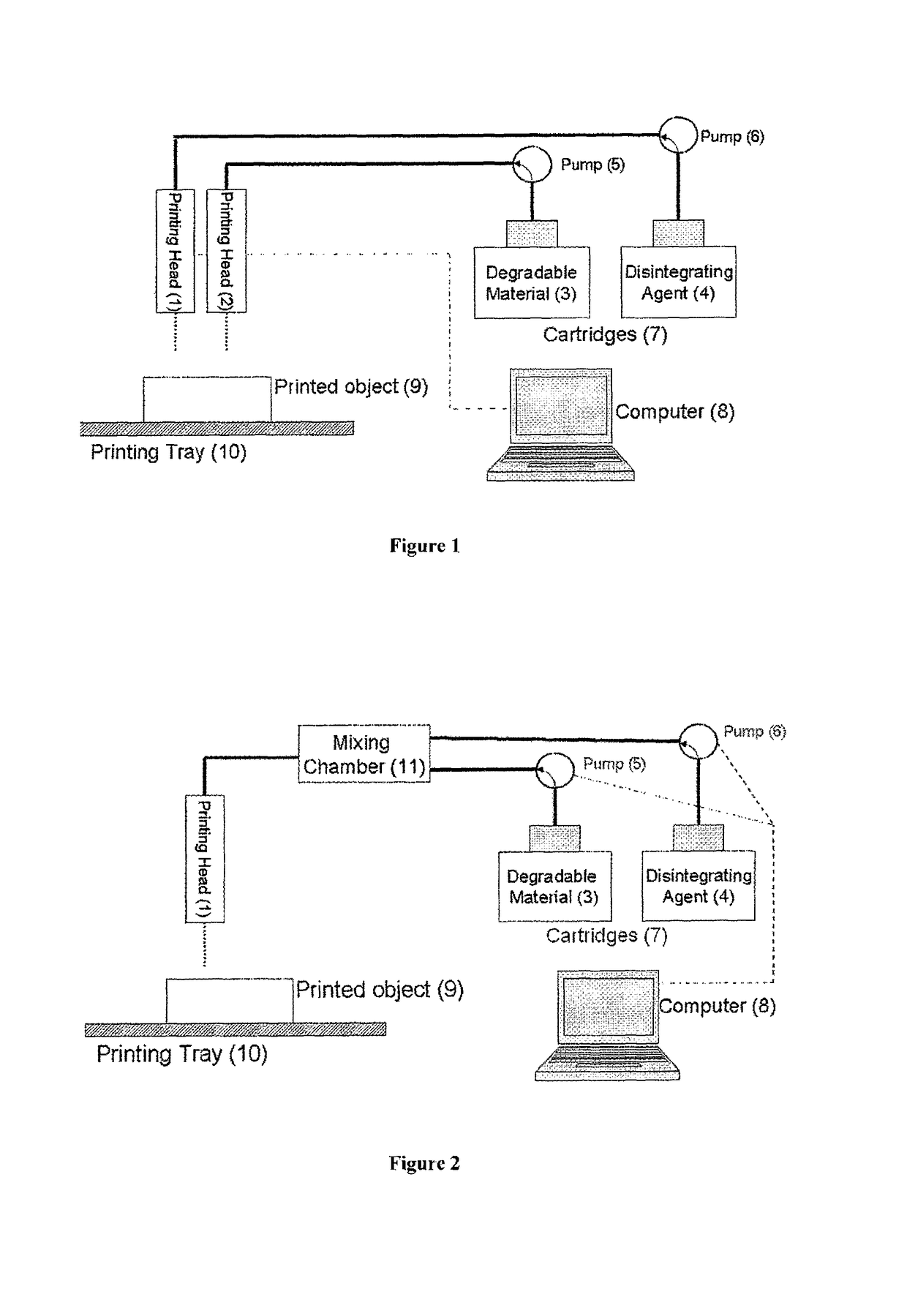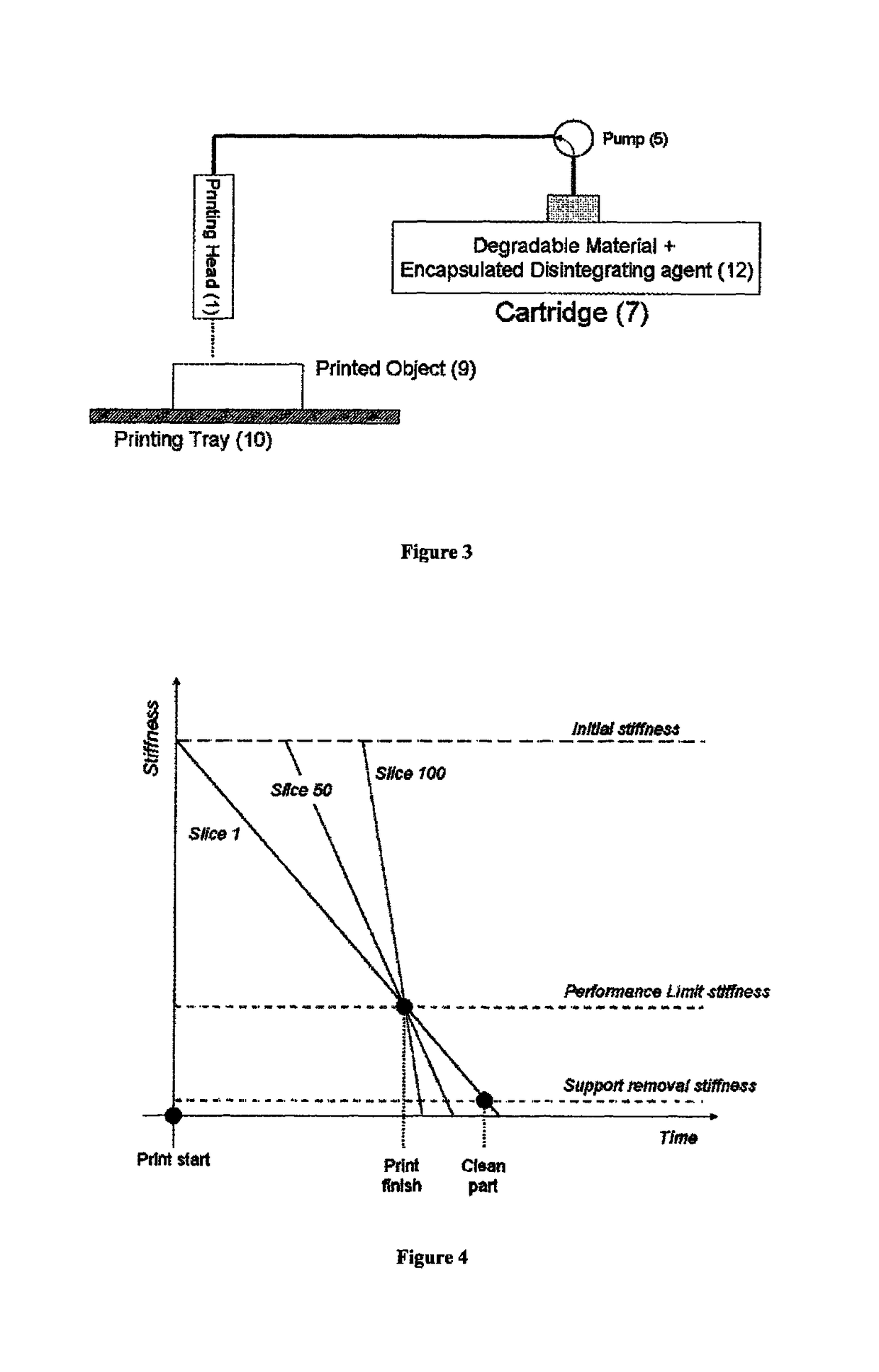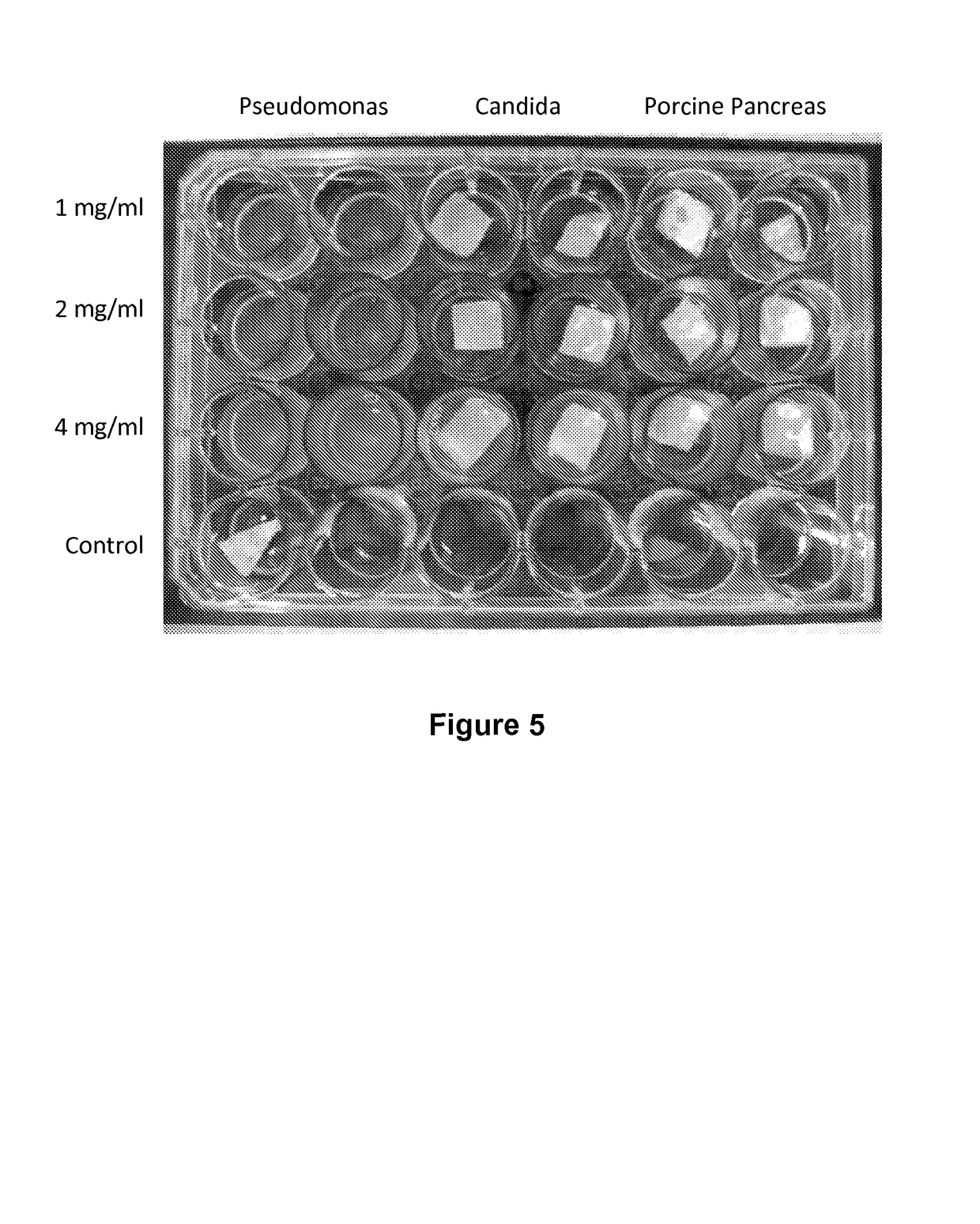Three-dimensional printing process for producing a self-destructible temporary structure
a temporary structure, three-dimensional printing technology, applied in the direction of manufacturing tools, transportation and packaging, coatings, etc., can solve the problems of damage to the formed object, difficult and time-consuming removal of the support structure, and complex geometries
- Summary
- Abstract
- Description
- Claims
- Application Information
AI Technical Summary
Benefits of technology
Problems solved by technology
Method used
Image
Examples
example 1
Lipase Activity on PCL
[0097]Electrospun PCL was added to solutions of three lipases derived from Pseudomonas, Candida and Porcine pancreas lipases. Each solution comprised 1, 2, or 4 mg / ml of one of the lipases. As shown in FIG. 5, PCL specimens added to Pseudomonas lipase solutions were degraded after two hours of incubation, while the two other lipases did not degrade the PCL.
example 2
Triblock Polymer Solution Viscosities
[0098]As demonstrated in FIG. 6, triblock polymers PCL-PEG-PCL were synthesized from PEGs of various lengths and c-Caprolactone, in the presence of Stannous 2-Ethyl-Hexanoate. After synthesis, sample molecular structures were analyzed by NMR.
[0099]Three triblock polymer species were synthesized:[0100]1. PEG 4000Da: PCL1000DaPEG4000DaPCL1000Da [0101]2. PEG 6000Da: PCL1000DaPEG6000DaPCL1000Da [0102]3. PEG10000Da: PCL1000DaPEG10000DaPCL1000Da
[0103]Viscosities were measured in 20% polymer solutions in water, each comprising one of the above three polymers, as a function of shear rate at 25° C. The results are shown in FIG. 7.
[0104]The results shown in FIG. 7 teach that a triblock solution is a shear thinning non-newtonian fluid. Further, the solution viscosity is highly dependent on polymer length, where longer polymer chains cause an increase in viscosity.
[0105]Time sweep tests were performed at 25° C. at shear rates of 10sec-1 and 50sec-1 and at 4...
example 3
Triblock Degradation by Lipase
[0124]The degradation of the triblocks, prepared according to Example 2 (PCL added to PEG4000Da, PEG6000Da and PEG10000Da), was monitored in two ways: 1) by measuring pH change with time after lipase addition; and 2) by measuring the change in viscosity with time.
[0125]PCL monomers are acids, and therefore, as the PCL polymers degrade, the pH of the solution is expected to drop. Additionally, the solution viscosity is expected to decrease with degradation, since the length of the polymers becomes shorter.
[0126]The following experiments were conducted with the lipase enzyme extracted from Pseudomonas cepacia (Sigma 62309, BioChemika, powder, light beige, ˜50 units / mg).
[0127]Change in pH During Degradation
[0128]10% solutions of the three triblock polymers in water were degraded by the addition of 0.5 mg / ml of the lipase. The pH change of the solutions was monitored both by addition of phenol red (red in neutral solutions and yellow in acidic solutions) an...
PUM
| Property | Measurement | Unit |
|---|---|---|
| temperature | aaaaa | aaaaa |
| temperature | aaaaa | aaaaa |
| temperatures | aaaaa | aaaaa |
Abstract
Description
Claims
Application Information
 Login to View More
Login to View More - R&D
- Intellectual Property
- Life Sciences
- Materials
- Tech Scout
- Unparalleled Data Quality
- Higher Quality Content
- 60% Fewer Hallucinations
Browse by: Latest US Patents, China's latest patents, Technical Efficacy Thesaurus, Application Domain, Technology Topic, Popular Technical Reports.
© 2025 PatSnap. All rights reserved.Legal|Privacy policy|Modern Slavery Act Transparency Statement|Sitemap|About US| Contact US: help@patsnap.com



